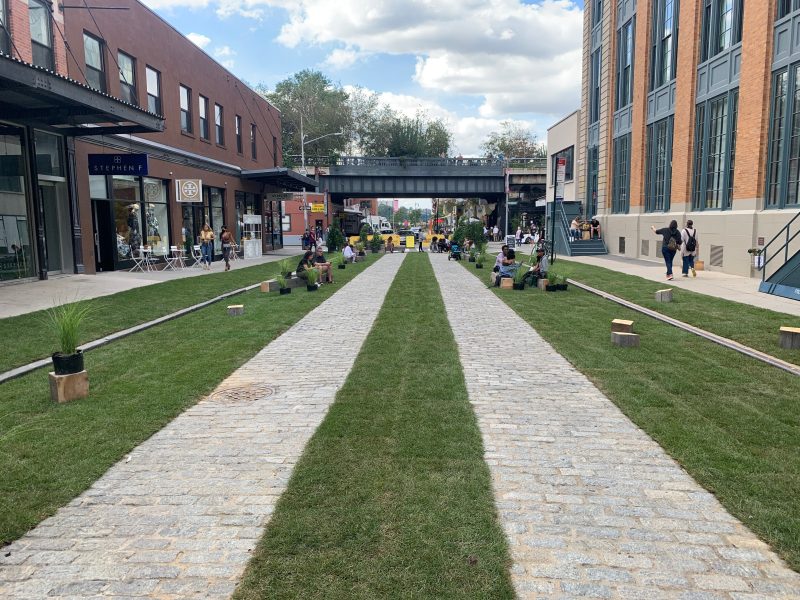Eyes on the Street: Meatpacking Biz Group Has Seen the ‘Future’ of Public Space

They unpaved paradise.
Little West 12th Street in the Meatpacking District has been transformed from an underused open street into a bustling, lively hangout thanks to 5,000 square feet of donated sod — Exhibit A in the open-and-shut case for more car-free streets in pedestrian-majority neighborhoods.
It’s a pleasant place to sit or stroll — and it’s good for business.
“There’s an organic visual appeal — you see a street like this and you want to walk down it,” said Jeffrey LeFrancois, the executive director of the Meatpacking Business Improvement District, which created the one-block vision of utopia as part of the “Future Streets” collaboration of the American Institute of Architecture, the American Society of Landscape Architecture and the American Planning Association.

The block-long stretch between Washington and Greenwich streets has been largely transformed — first by the elimination of car storage (which still typically mars the de Blasio administration’s “open streets” program), then with the installation of tables and a large, grass-covered seating area on the western end of the block. That’s created foot traffic, which creates more business.
“We’ve had twice the normal number of customers,” said Courtney McKamey, the manager of the Little West Wine and Spirits on the block, who provided a reminder that businesses that rely on walk-in customers have no need for streets filled with parked cars.
And an inviting streetscape lives up to its name.
“It’s awesome. People now love this block,” said Janet Liff, a member of the local community board. “Before the grass and the tables, no one was coming here. Now, we can use this street to say, ‘This is what the city could do all over.’ People don’t ‘get it’ until they see it.”
The “Future Streets” initiative has been in full swing for several years now, but this is the first to be built during the COVID-19 era — and that makes all the difference in the world because the dramatic reduction in car traffic during the pandemic has opened many eyes to the possibilities of a better city.
“People don’t want to go back to the bad old days when cars overran the street,” said Jonathan Cohn of the AIA’s Future Streets Committee. “No one wants to go back to ‘normal.’ We want a better normal.”
For LeFrancois, the three-day demonstration was subconsciously inspired by that old show-biz adage, “Leave them wanting more.”
“People are going to be upset when this is gone,” he said. “That’s the sales pitch to the city.”





